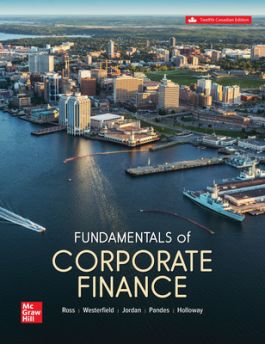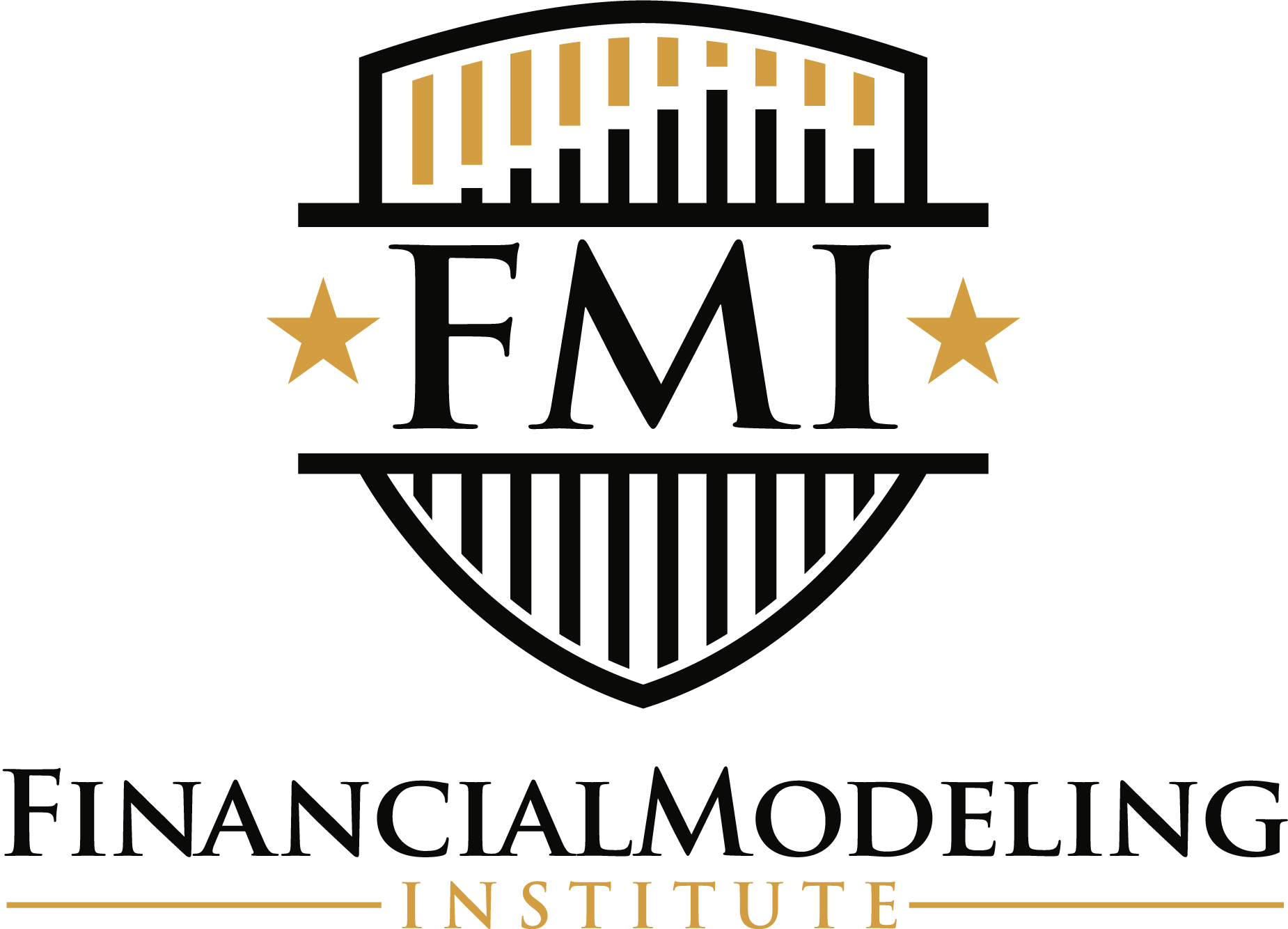Fundamentals Of Corporate Finance
Boost Student Career Readiness with FMI's Financial Modeling Course
With McGraw Hill Connect for Finance in Canada, students get all the powerful learning tools you know and trust — auto-graded assignments, interactive content, robust analytics, and more. Now, they also receive exclusive access to the Foundations in Financial Modeling course from the Financial Modeling Institute (FMI), a professional credentialing course typically valued at $270 — included at no additional cost.
This introductory course equips students with essential financial modeling skills, including building pro-forma statements, projecting growth, and mastering Excel for career readiness.
The program includes 12 hours of video instruction, a multiple-choice exam, and a personalized digital badge upon completion. Designed by industry experts, it bridges the gap between academic learning and employer expectations, preparing students for roles in investment banking, corporate finance, private equity, and aligns curriculum of the CFA Program Financial Modeling Practical Skills Module (PSM), and more.
This partnership reflects McGraw Hill’s commitment to enhancing student success by integrating practical, industry-relevant skills into academic resources—all at no additional cost to students using McGraw Hill Connect!
Empowering Students with Industry Ready Skills
Tom Holloway, finance professor at the University of Calgary and Canadian Author of Ross, Fundamentals of Corporate Finance, 12th edition, has taught over 800 students annually in the core second-year finance course. For the past three years, Professor Tom Holloway has utilized McGraw Hill Connect, and for the last two years, he has incorporated the FMI Foundations in Financial Modeling module.
Professor Holloway emphasizes that the FMI Foundations program has addressed a critical gap between academic learning and employer expectations. It equips students with essential financial modeling skills, such as building pro-forma statements, projecting growth, and understanding Excel interactions—skills highly valued in fields like investment banking, corporate finance, and private equity. Holloway notes that over 99% of his students complete the program, despite its rigor, because they recognize its significant career benefits. Many students proudly display their FMI credentials on LinkedIn, showcasing their readiness for industry demands.
Holloway states, “Our experiment with FMI Foundations was motivated by an identified gap between what we were delivering to employers and their expectations. The small number of students that taught themselves financial modeling in Excel were in high demand.”
He highlights the value of the McGraw Hill partnership, which makes the FMI program accessible at no cost to students. Holloway believes this initiative seamlessly integrates practical skills into academic courses, preparing students for success in the finance industry.
PART 1 Overview of Corporate Finance
- Introduction to Corporate Finance
- Financial Statements, Cash Flow, and Taxes
PART 2 Financial Statements and Long-Term Financial Planning
- Working with Financial Statements
- Long-Term Financial Planning and Corporate Growth
Appendix 4A: A Financial Planning Model for the Hoffman Company (Available on Connect)
Appendix 4B: Derivation of the Sustainable Growth Formula (Available on Connect)
PART 3 Valuation of Future Cash Flows
- Introduction to Valuation: The Time Value of Money
- Discounted Cash Flow Valuation
- Interest Rates and Bond Valuation
Appendix 7A: Managing Interest Rate Risk
Appendix 7B: Callable Bonds and Bond Refunding (Available on Connect)
- Stock Valuation
PART 4 Capital Budgeting
- Net Present Value and Other Investment Criteria
Appendix 9A: The Modified Internal Rate of Return
- Making Capital Investment Decisions
Appendix 10A: More on Inflation and Capital Budgeting
Appendix 10B: Capital Budgeting with Spreadsheets
Appendix 10C: Deriving the Tax Shield on CCA Formula
- Project Analysis and Evaluation
PART 5 Risk and Return
- Lessons from Capital Market History
- Return, Risk, and the Security Market Line
Appendix 13A: Derivation of the Capital Asset Pricing Model
PART 6 Cost of Capital and Long-Term Financial Policy
- Cost of Capital
Appendix 14A: Adjusted Present Value
Appendix 14B: Economic Value Added and the Measurement of Financial Perfomance
- Raising Capital
- Financial Leverage and Capital Structure Policy
Appendix 16A: Capital Structure and Personal Taxes
Appendix 16B: Derivation of Proposition II (Equation 16.4)
- Dividends and Dividend Policy
PART 7 Short-Term Financial Planning and Management
- Short-Term Finance and Planning
- Cash and Liquidity Management
Appendix 19A: Cash Management Models (Available on Connect)
- Credit and Inventory Management
Appendix 20A: More on Credit Policy Analysis (Available on Connect)
PART 8 Topics in Corporate Finance
- International Corporate Finance
- Leasing
- Mergers and Acquisitions
PART 9 Derivative Securities and Corporate Finance
- Enterprise Risk Management
- Options and Corporate Securities
- Behavioural Finance: Implications for Financial Management
Appendix A: Mathematical Tables (Available on Connect)
Appendix B: Answers to Selected End-of-Chapter Problems (Available on Connect)
Now in a Twelfth Canadian Edition, Ross Fundamentals of Corporate Finance continues its tradition of excellence as a market leader. Ross focuses on three powerful ideas which are integrated throughout – emphasis on intuition, unified valuation approach, and managerial emphasis giving students a solid foundation in business and finance.
The Twelfth Edition has been updated to provide current, real world examples, and a wealth of new problem material.
Meeting you and your students where you are.
Using a personalized approach to teaching and learning, Connect is powered by adaptive technologies so your students learn more efficiently, retain more and achieve better outcomes and you can provide the engagement and expertise for more ‘aha’ moments.
CURRENCY. Updated real-world examples with a renewed focus on Canadian businesses and transactions fully reflecting the breadth of the Canadian economy.
RELEVANCE. Topics such as sustainable investing and cryptocurrency are integrated into classic curriculum. These fit into the existing sections as examples. For example, a green bond is another type of bond and Bitcoin prices illustrate price return and volatility calculations
New AI Reader. McGraw Hill's AI Reader provides students with an embedded AI learning tool that promotes active reading to drive meaningful engagements and conceptual understanding of course content, not just rote memorization. AI Reader allows instructors to maintain control over how students are using AI in their courses, with trusted materials and guardrails.
Algorithmic Integrated Excel Problems. Algorithmic question versions added for select chapters to accompany the already robust bank of Integrated Excel questions included in every chapter.
Tableau Dashboard Activities. Over 20 new interactive activities added. These allow students to explore directly within Connect and include auto-graded questions focused on both calculations and analysis.
Video Questions. Over 300 video questions heavily audited and reviewed for use in Canadian Finance. Auto-gradable in Connect.
Application-Based Activities. Over 20 role-play simulations that allow students to apply real-world problem-solving skills to relevant finance scenarios.
Test Bank. Question bank revised significantly with more medium-level questions added and underused questions simplified. Algorithmic questions added in heavily used chapters.
MARKET LEADER. Ross Fundamentals of Corporate Finance continues its tradition of excellence that has earned its status as market leader, offering breadth of coverage and flexibility in organization. Three powerful ideas are integrated throughout – emphasis on intuition, unified valuation approach, and managerial emphasis.
EMPHASIS ON INTUITION. Ross separates and explains the principles at work on an intuitive level before launching into any specifics. The underlying ideas are discussed, first in very general terms and then by way of examples that illustrate in more concrete terms how a financial manager might proceed in a given situation.
UNIFIED VALUATION APPROACH. Net present value (NPV) is treated as the basic concept underlying corporate finance. Every subject covered in Fundamentals of Corporate Finance is firmly rooted in valuation, and care is taken throughout the text to explain how particular decisions have valuation effects.
MANAGERIAL FOCUS. Throughout the text, the role of the financial manager as decision maker is emphasized, and the need for managerial input and judgment is stressed.
WEALTH OF PROBLEM MATERIAL. Ross includes a variety of problem material to support student learning including end-of-chapter Questions and Problems – labelled by topic and separated into 3 learning levels: Basic, Intermediate, and Challenge; Integrative Mini Cases – longer problems that integrate a number of topics within the chapter, and Internet Application Questions – questions that encourage students to explore using the internet.
Connect. Connect is McGraw Hill's award-winning digital teaching and learning solution designed to enhance your teaching style. It allows you to deliver, personalize and measure your course with ease. Plus, Connect can integrate with your LMS system to provide a seamless experience for you and your students. Within Connect, students have access to SmartBook, an adaptive learning and reading tool that personalizes content to each student's unique needs. Because SmartBook creates the ideal study path for each student, every minute they spend studying is the most effective minute possible.
McGraw-Hill Connect is an award-winning digital teaching and learning solution that empowers students to achieve better outcomes and enables instructors to improve course management efficiency.
High-Quality Course Material
Our trusted solutions are designed to help students actively engage in course content and develop critical higher-level thinking skills while offering you the flexibility to tailor your course to the ways you teach and the ways your students learn.
Assignments & Automatic Grading
Connect features a question bank that you can select from to create homework, practice tests and quizzes. Dramatically reduce the amount of time you spend reviewing homework and grading quizzes, freeing up your valuable time to spend on teaching.
Analytics & Reporting
Monitor progress and improve focus with Connect’s visual and actionable dashboards. Reports are available to empower both instructors and students with real-time performance analytics.
Seamless Integration
Link your Learning Management with Connect for single sign-on and gradebook synchronization, with all-in-one ease for you and your students.



